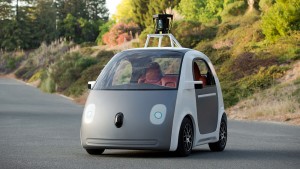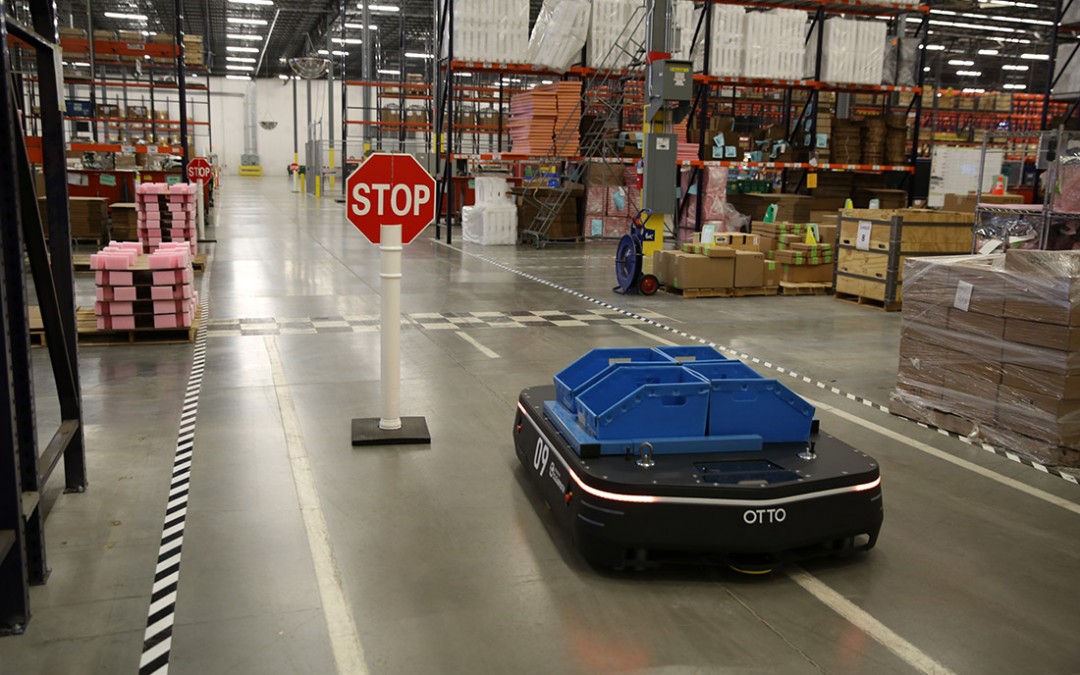Self-driving vehicles aren’t only for Google maps and space-age books. In fact, the vehicles are already hitting the streets – indoor streets that is.
Indoor cities vs. outdoor cities
Indoor cities are similar to outdoor cities in many ways: they share streets, sidewalks, pedestrian traffic, vehicular traffic, and in some cases, even bicycle traffic. The thing about indoor cities that makes them better from a product development perspective is that there’s no inclement weather, no rain or snow, and there are consistent lighting conditions. Overall, indoor cities are a much more controlled environment, with a population that has a certain level of training.
Hitting the floors before the roads

Google car for the outdoors
It will be at least 2025 before we see robots in more general-purpose and public environments, but robots are already operating in specialized and controlled environments, like factory floors. The technology available to us right now is impacting this shift in a huge way. Technology pillars that have been in development for the last decade – big data, mobile computing – are now ready for the next phase of iteration. We’re seeing tech giants like Apple and Uber, as well as the automotive industry and the cellphone industry using and refining these technologies to advance them, and it’s this advancement that is enabling self-driving vehicles.
So why are we using them for indoor material transport, you ask? Simply put, they’re controlled environments. The Google driverless car for instance, operates outside and has to deal with unpredictable people and weather – currently, the sensors on Google’s car can’t collect data from the street if it’s raining or snowing; but in indoor cities (i.e.: factories) the environment is clean, weather is not an issue, and people working in or around the self-driving vehicles are trained to work with them safely. Because of these controlled environments, level 4 autonomy can be achieved.
Learn more about self-driving vehicles for indoor cities, read the Industry 4.0 eBook.
A Strong fit for factories now
Factory operators constantly strive to deliver on three key factors: generate a higher throughput, at a lower cost, with flexible deployment. Self-driving vehicles for indoor material transport are able to do all of the above. They can deliver a higher throughput because they are more reliable, and can work virtually 24 hours a day, 7 days a week. Since these vehicles are always running, with a mission, they start to provide the services that are required to move things back and forth at a very cost-effective price. With this technological advancement, factory operators will more than likely be able to re-shore operations and bring labour back to North America.
Self-driving vehicles for indoor material transport also allow for flexible, infrastructure-free deployment, unlike conventional automated technology that was limited to magnetic tape on the floor or other infrastructure requirements needed to navigate. Self-driving vehicles don’t require any fiducials to move around a building – any area can easily be remapped, or even re-planned for the movement from point A to point B, and B to C.
The future is self-driving
The exciting part of this story is that this is only the beginning of the self-driving revolution, and it’s only a matter of time before everything on wheels is moving on its own. “Imagine the Zamboni driving onto the ice halfway through the hockey game on its own. Inventory tracking is another thing, construction, the list just goes on and on,” said Michael Hanuschik, Chief Product Officer at Clearpath Robotics. “It’s not even everything on wheels, it will be everything that isn’t on wheels. If you share a printer in the office, the printer will come to you with your documents. With all the iOS development and Android development, apps will soon have physical wheels that can start to interact with the environment.” The possibilities are endless.


